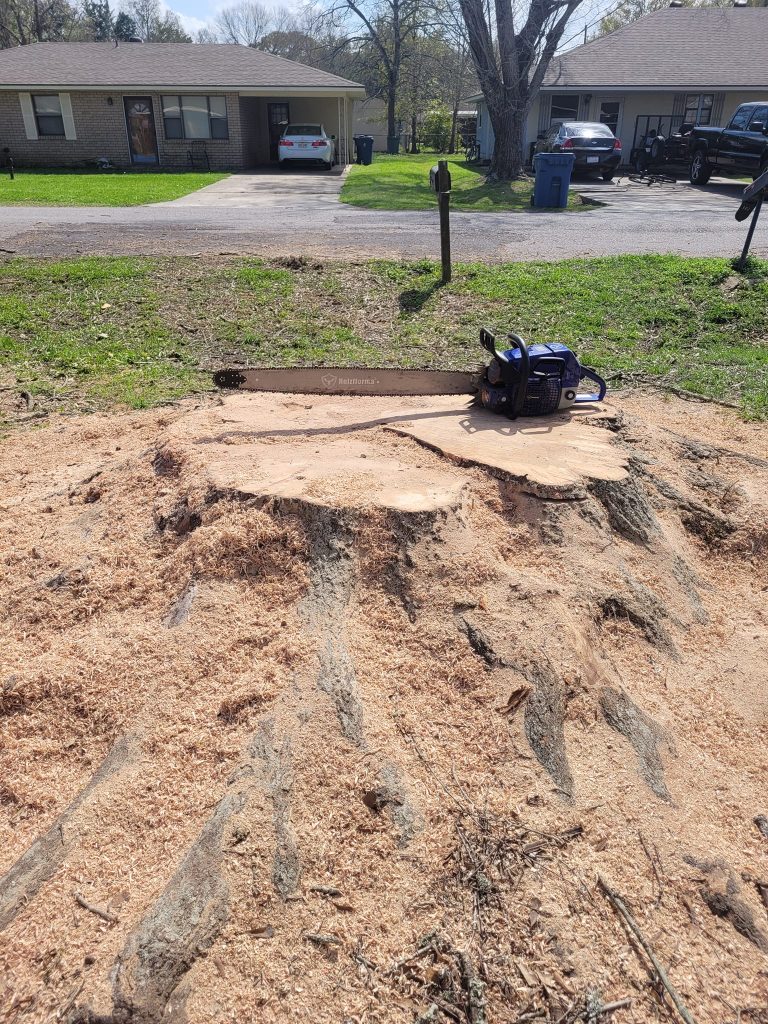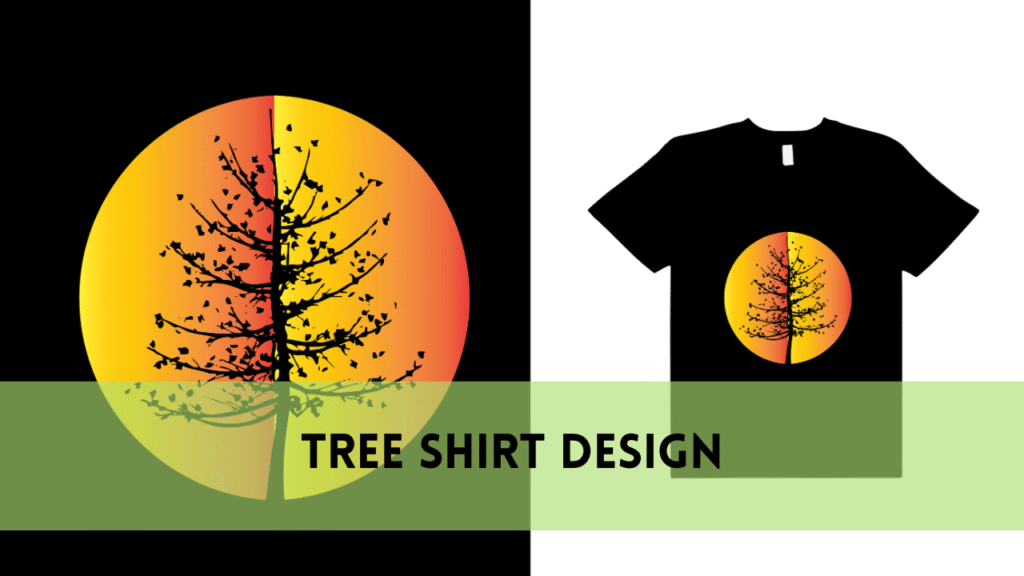Remove a stump without Grinder
Unlock the mysteries of stump removal as we begin on a trip to discover the keys to properly removing a stump without a grinder. In this comprehensive guide, Arborist Cros shares expert information and time-tested procedures, giving you the confidence to handle stump removal operations with ease. Say goodbye to the mystery of stump removal and welcome the detailed insights that will help you through the process. Whether you’re a seasoned DIY enthusiast or a first-time gardener, Arborist Cros’s reveal of stump removal secrets promises to provide you with the knowledge you need for a smooth and successful journey into regaining your outdoor space.
The Power of Manual Stump Removal
Unleash the full potential of hand stump removal, a strong and efficient alternative to typical grinding procedures. Arborists and experienced landscapers agree that manual removal is more efficient and precise. This approach, which is sometimes overlooked, entails strategically cutting, excavating, and using various instruments to remove a stump without the use of heavy gear. Manual removal is not only a cost-effective solution, but it also provides for a more regulated approach in delicate or difficult-to-access places.Cros, an arborist with years of hands-on experience, explains the technique of manual stump removal. From choosing the correct equipment for the operation to comprehending the anatomy of a stump, this section reveals the secrets of successful manual extraction. Join us as we look at the power of manual stump removal, a technique that allows you to take control of your landscaping tasks with confidence and ease.
Understanding Stump Anatomy: A Key to Successful Removal
Embark on a journey to discover stump anatomy, which is critical to mastering the art of successful stump removal. Arborist Cros delves into the complicated structure of a stump, revealing its many components and pinpointing weaknesses that might be exploited for efficient removal. This part goes into the important understanding of how roots, trunks, and surrounding soil interact, providing crucial insights for a targeted and effective approach.
Arborist Cros, drawing on his years of experience, emphasized the need of understand stump anatomy before beginning removal. This understanding not only streamlines the process but also ensures a more sustainable and long-lasting result. Join us in unravelling the secrets held within the anatomy of a stump, empowering you to approach stump removal with precision and expertise.
Tools of the Trade: Equipping Yourself for Success
Arborist Cros recommends the following tools for successful stump removal:
- Mattock: Ideal for breaking up compacted soil and cutting through roots.
- Root Saw: Designed for precise cutting of larger roots.
- Stump Grubbing Hoe: A versatile tool for digging around the stump and prying out roots.
- Heavy-Duty Gloves: Ensure a firm grip and protection during manual labor.
- Safety Goggles: Shield your eyes from debris and wood chips.
- Chainsaw: efficient for cutting the stump close to the ground.
- Pickaxe: Useful for breaking up soil and rocks around the stump.
These tools, when used with care and precision, will empower you to tackle stump removal projects with confidence and effectiveness.
How to remove a stump without a grinder
Step-by-Step Stump Removal Guide
Follow this complete step-by-step tutorial for manual stump removal to ensure a successful and efficient approach.
Start by assessing the size, type, and condition of the stump. Identify any visible roots and measure their depth into the earth.
Wear heavy-duty gloves and safety goggles to protect yourself from any hazards such as splinters, debris, or dust.
Use a chainsaw to remove the stump as near to the ground as feasible. This reduces the amount of wood you’ll need to manually remove.
Begin digging around the stump with a mattock or grubbing hoe to reveal the main roots. Remove the soil to uncover the root structure.
Cut through the exposed roots with caution, using a root saw or chainsaw.
Use a root saw or chainsaw to carefully cut through the exposed roots. Pry them loose with a stump grubbing hoe and work your way around the stump.
Make an undercut beneath the stump by cutting upward at a 45-degree angle. This weakens the stump’s link with the roots.
Rock the stump back and forth to loosen it more. If it remains securely in place, keep cutting and removing roots until it is more manageable.
After the stump has been sufficiently loosened, use a mattock or shovel to dig around and beneath it. Lift the stump out of the hole, making sure all the roots are separated.
Fill the hole left by the removed stump with soil. Tamp it down to remove the air pockets.
Dispose of the stump responsibly and clean up the workspace. Ensure that all tools are stored appropriately.
Following these thorough instructions will help you master the art of manual stump removal, resulting in a clean and successful outcome.
Choosing the Right Location: Strategizing Stump Removal
Choosing the best place for stump removal is critical for a successful and efficient process. Consider the following criteria when strategizing your stump removal:
Proximity to Structures: Keep the stump away from buildings, fences, and other structures. This protects against potential injury during removal.
Accessibility: Select a location that provides easy access to tools and equipment. A clear and open area aids in the removal procedure.
Root System Visibility: Select a location where the root system is accessible. Clear visibility of the roots makes the cutting and removal process easier.
Avoiding Utility Lines: Before you begin, identify and mark the locations of any
underground utility lines. Choose a location that does not interfere with utilities, assuring safety during the removal process.
Disposal Considerations: Choose a location where the removed stump and debris may be readily disposed of or recycled, reducing post-removal cleanup time.
By strategically selecting the removal area based on these parameters, you may ensure a safe and effective stump removal process.
Safety Measures: Prioritizing Well-being During Stump Removal
Prioritizing safety during stump removal is critical to ensuring a smooth and risk-free process. Implement the following safety steps to ensure well-being:
Equip yourself with suitable protection gear, including as gloves, safety glasses, and durable footwear. This prevents potential injuries from debris or tools.
Before using any tools or equipment, thoroughly inspect and maintain them. To avoid mishaps, make sure the blades are sharp, the handles are secure, and the machinery is in operating order.
Remove any impediments, tripping hazards, or onlookers from the workspace. A clear and uncluttered location reduces the likelihood of mishaps during stump removal.
Establish explicit communication protocols when working as part of a team. Use signals or verbal cues to coordinate movements and actions, thereby improving overall safety.
FAQS
Q: Can I remove a huge stump without a grinder?
A: Absolutely, and we’ll advise you on the best strategies for addressing larger stumps without the use of specialized equipment.
Q: How long does it take to remove a stump manually?
A: The timeframe varies, however our guide provides recommendations to speed up the procedure dependent on the size and nature of your stump.
Q: What precautions should be taken during stump removal?
A: Safety is our top priority, and our FAQs include all of the necessary procedures for a safe stump removal process.
Q: Are there any eco-friendly ways for stump removal?
Yes, Arborist Cros teaches eco-friendly practices for reducing environmental impact during stump removal.
Q: Can I replant in the same location after stump removal?
A: Certainly, and our guide offers advice on preparing the land for future planting.
Conclusion
Finally, mastering stump removal requires not only physical skill but also a grasp of the intricacies and the use of effective tactics. You may remove stumps with confidence if you know the anatomy of the stump, have the correct instruments, and take the necessary precautions.
By identifying the correct place, structuring the removal procedure, and prioritizing safety, you raise stump removal from a frightening undertaking to a well-executed operation. Whether you choose hand removal or machinery, each phase adds to the overall success of the project. Remember, you have the power to modify your outside space. Accept the challenges, arm yourself with the essential knowledge, and view stump removal as a chance to improve the aesthetics and functionality of your environment.
Meta Description
Learn expert tips on how to remove a stump without a grinder in this detailed guide by Arborist Cros. Discover efficient techniques, insightful FAQs, and the essential steps for successful stump removal.




